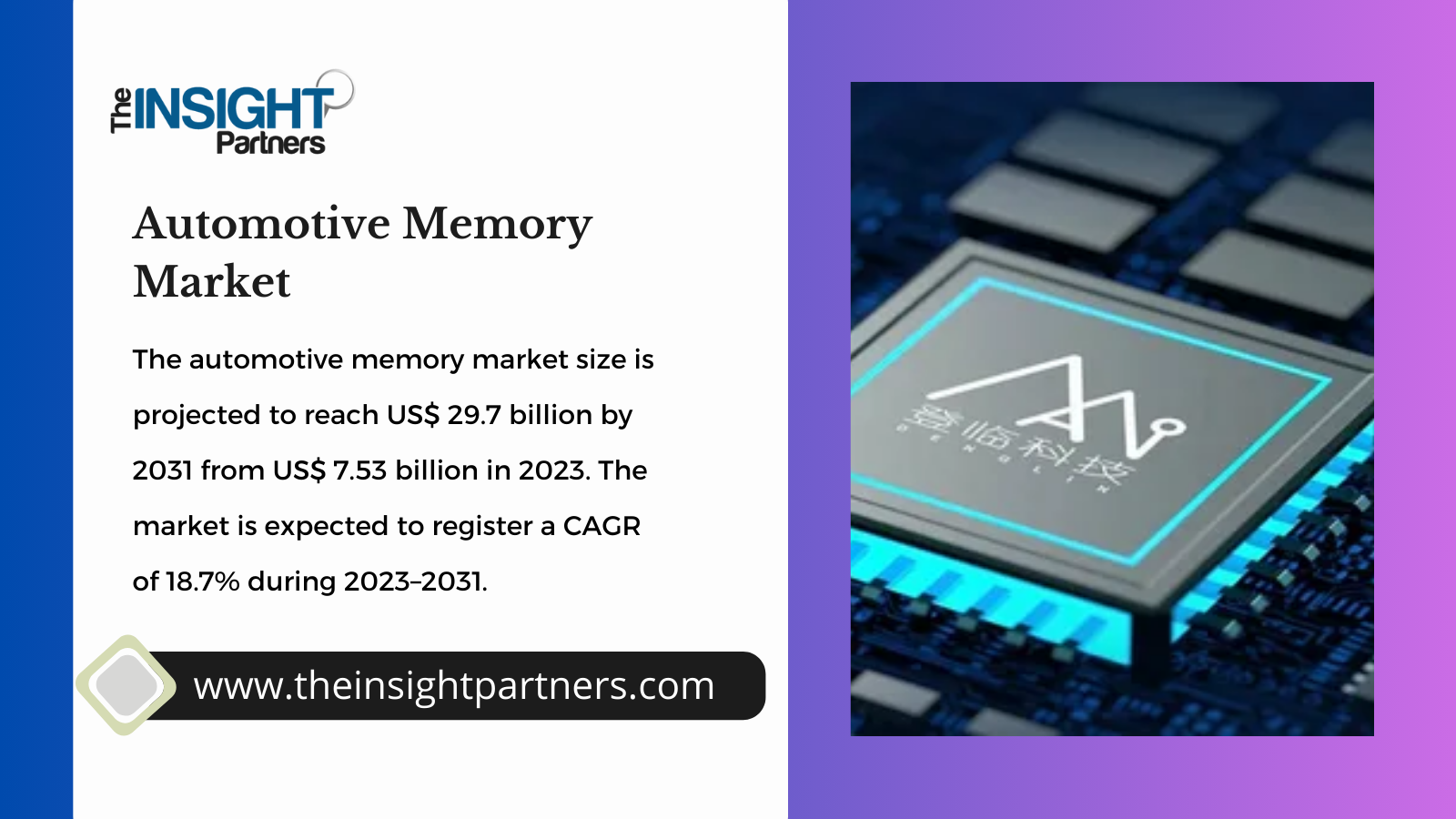
Automotive memory has experienced several innovations over the last few years, especially in connected cars, EVs, and driverless driving technologies. Infotainment systems navigation, ADAS (Advanced Driver-Assistance Systems), as well as engine control units (ECUs), are some of the main drivers of this change. The automotive memory market will continue to grow shortly due to increased technology-driven growth for faster, more reliable, and more efficient memory solutions.
Market Overview
The automotive memory Market size is forecasted to reach US$ 10,026.91 Million in 2023, and US$ 14,120.58 Million by 2031, at a CAGR of 4.4% from the period 2023 to 2031. This is made possible by the ever-growing use of high-performance memory chips in the latest automobiles for complex car functions.
Key Drivers of Growth
The following are some of the major reasons for the automotive memory market growth:
Electric and Self-Driving Vehicles: As more vehicles get electric or self-driving, advanced memory solutions become imperative. Motors for EVs need higher-level memory modules for power management, vehicle-to-grid communication, and GPS systems; autonomous cars need lots of memory to store data and make decisions.
Technological Advancements: infotainment, ADAS, and in-car connectivity are all driving new needs for powerful memory systems. Whether it is for high-performance computing or data storage, memory modules such as DRAM (dynamic random access memory), NAND flash, and NOR flash are necessary to provide smooth
Needs of Customers: The more features that consumers want from in-car electronics (information, navigation, safety), the more advanced memory solutions car manufacturers have to integrate.
Smart Connectivity: With increasingly connected vehicles that need to constantly communicate with cloud apps, IoT, and other vehicles, robust memory solutions are also being demanded.
Automotive Memory Market Segmentation
The car memory market can be classified based on type, application, and geography:
By Type:
DRAM: is one of the most widely used memory types in cars because of its speed of data processing. : It is mostly used in infotainment systems, ADAS
NAND Flash: NAND flash memory is used to store data in new cars such as media files on the infotainment system, maps, and control consoles.
NOR Flash: NOR: flash memory can store firmware in ECUs, which will quickly fetch data from memory sources with no data transfers from other memory.
By Application:
Infotainment: As automobiles require more high-end infotainment components, automotive memory is required to handle high-definition graphics, media storage, and real-time data analysis.
ADAS: Automotive memory supports the processing demands of real-time ADAS (sensor, camera, radar).
Powertrain Control: Memory is needed in powertrain control devices for controlling engine performance, EV battery storage, and vehicle efficiency.
By Region:
North America: The automotive memory market in North America is influenced by the high penetration of electric vehicles and self-driving systems in the country.
Europe: Europe is also a leading region due to rising demand for electric cars and emission norms.
Asia-Pacific: The Asia-Pacific is the largest market for automotive memory, due to the presence of the major auto industry players and the emergence of new advanced automotive technology in China, Japan, and South Korea.
Challenges in the Market
The automotive memory market is in its growth phase, but a few obstacles still exist:
Price of High-End Memory: Vehicles containing high-performance memory will increase the cost of the car. ‘Manufacturers need to consider the demand for a high level of technology but also the price point to compete.
Data Security: With connected cars increasing in number, data security is important. Automotive memory solutions need to solve cybersecurity and data protection issues, especially in the context of AV systems.
Future Outlook
The automotive memory market has great prospects in the future based on advancements in electric and autonomous driving systems and the growing need for smarter, safer, and more fuel-efficient automobiles. Automotive makers are likely to keep investing in the best-in-class memory solutions for the next-gen in-car electronics.
The market is projected to grow at a CAGR of 4.4% through 2031, to reach US$ 14,120.58 million by 2031. As automotive technologies become better and more durable, the market will also continue to need better and more reliable memory solutions.
Short FAQs:
What is automotive memory?
Memory is used in vehicles for data storage and processing.
What types of automotive memory exist?
DRAM, NAND flash, and NOR flash.
Why is automotive memory important?
It supports vehicle functions like infotainment, ADAS, and powertrain control.
What is the market size for automotive memory?
US$ 10,026.91 million in 2023, growing to US$ 14,120.58 million by 2031.
What is the growth rate of the Market?
A CAGR of 4.4% from 2023 to 2031.
What drives the Market?
Growth in electric vehicles (EVs) and autonomous driving technologies.
How is memory used in autonomous vehicles?
It processes data from sensors for decision-making and control.





















Write a comment ...